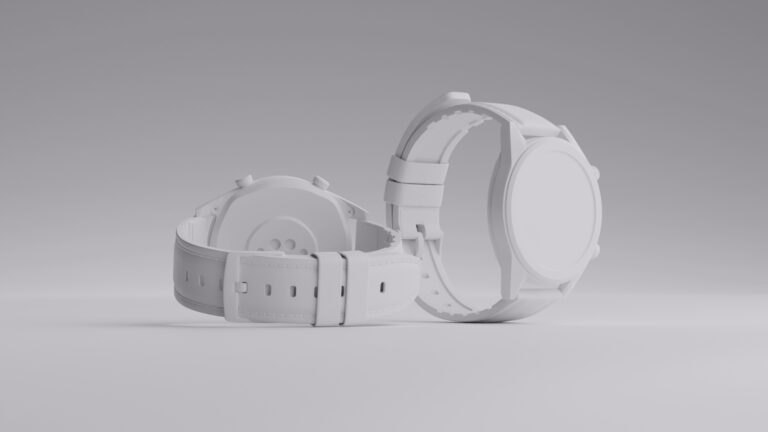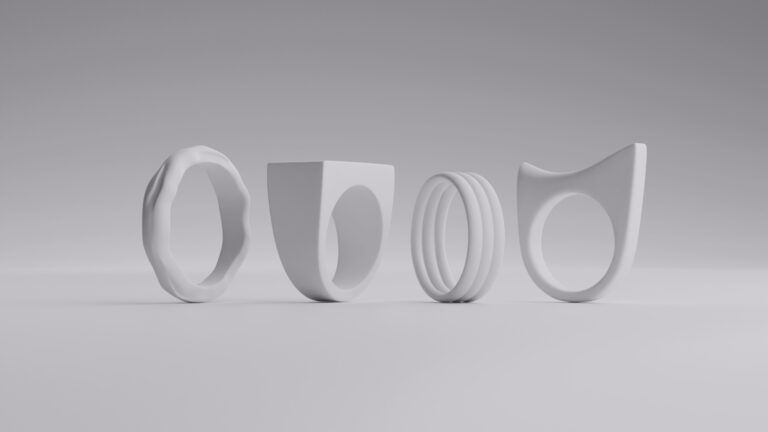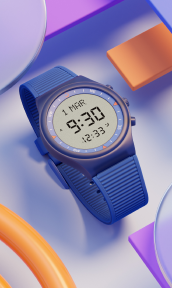Step into a world where design dreams materialize at the click of a button. Interior rendering has transformed the way we envision, create, and experience spaces, putting unprecedented creative power into the hands of designers and clients alike. Gone are the days of struggling to convey complex design concepts through static sketches or mood boards – modern visualization technology brings every texture, shadow, and subtle design detail to vivid life before the first nail is hammered.
The magic happens at the intersection of artistic vision and cutting-edge technology. Each passing month brings innovations that make interior visualization more captivating and accessible than ever. Designers are crafting photorealistic environments where you can count every thread in the upholstery, examine how natural light plays across surfaces throughout the day, and even feel the spatial flow of a room before it exists in physical form.
The landscape of interior visualization has evolved dramatically, powered by artificial intelligence, virtual reality, and sophisticated 3D modeling tools. Let’s explore the 2025 trends and techniques that are reshaping the world of design visualization.
Understanding the basics of interior rendering

Interior rendering is the art and science of creating detailed digital visualizations of indoor spaces using specialized software and techniques. This process transforms 2D plans and creative concepts into vivid, three-dimensional representations that bring designs to life before construction begins.
Modern interior rendering combines traditional design principles with cutting-edge technology. Advanced software like 3ds Max, V-Ray, and Corona Renderer enables designers to create stunningly realistic visualizations. These tools simulate natural light, textures, and materials with unprecedented accuracy, making it possible to visualize every aspect of a space in perfect detail.
The integration of AI-powered rendering tools has streamlined the visualization process significantly. Machine learning algorithms can now generate realistic textures, optimize lighting conditions, and even suggest design improvements automatically. This technological advancement has reduced rendering times from hours to minutes while maintaining exceptional quality.
Virtual and augmented reality have transformed how we experience rendered spaces. VR headsets allow clients to walk through virtual rooms, while AR applications enable them to overlay digital elements onto existing spaces through their mobile devices. This immersive technology helps stakeholders make more informed decisions by experiencing designs at human scale.
The democratization of 3D visualization tools has made professional-quality rendering accessible to more designers than ever before. Cloud-based platforms and user-friendly interfaces have lowered the entry barrier, allowing even small design firms to offer high-quality visualization services to their clients.
The evolution of rendering technology

Real-time rendering has emerged as a game-changing technology in interior visualization. Unlike traditional rendering methods that require hours of processing, real-time engines like Unreal Engine and Unity deliver instant results. This immediate feedback allows designers to make changes on the fly during client meetings.
Photorealistic rendering has reached new heights with physically based rendering (PBR) materials and advanced lighting algorithms. These technologies simulate how light interacts with different surfaces, creating images that are virtually indistinguishable from photographs. The ability to achieve such realism helps clients visualize their spaces with absolute clarity.
3D walkthroughs have become increasingly sophisticated, offering interactive experiences that go beyond static images. These dynamic presentations allow viewers to explore spaces at their own pace and examine details from any angle. The integration of environmental sounds and ambient effects creates an even more immersive experience.
Cloud computing has revolutionized the rendering process by providing access to powerful processing resources on demand. This technology allows designers to render complex scenes quickly without investing in expensive hardware. Also, cloud-based collaboration tools enable teams to work seamlessly across different locations.
AI-driven automation has streamlined many aspects of the rendering workflow. From automatic material assignment to intelligent noise reduction, artificial intelligence helps designers focus on creative decisions rather than technical details. This efficiency gain has made high-quality rendering more accessible and cost-effective.
Advantages and challenges

Benefits of interior rendering
Effective communication is a primary advantage of interior rendering. Photorealistic visualizations eliminate misunderstandings between designers and clients by providing a clear, shared vision of the final result. This visual clarity helps prevent costly revisions during construction.
Cost efficiency is another huge benefit. Virtual prototyping allows designers to experiment with different materials, layouts, and finishes without physical samples or mock-ups. This digital approach saves both time and resources while enabling more creative exploration.
With 3D visualization, design flexibility becomes virtually unlimited. Designers can quickly generate multiple variations of a space, testing different color schemes, furniture arrangements, and lighting scenarios. This iterative process helps clients make confident decisions about their investments.
Marketing potential increases substantially with high-quality renderings. Real estate developers and interior designers can showcase projects before completion, generating interest and securing commitments early in the process. Virtual tours and 360-degree views provide powerful tools for remote presentations and sales.
Challenges to consider
Initial investment in technology and training represents a significant hurdle. Professional rendering software and hardware can be expensive, and developing the necessary skills requires time and dedication. However, the long-term benefits often justify this upfront investment.
Technical complexity can be overwhelming for newcomers. Learning to create realistic materials, proper lighting setups, and accurate camera settings requires extensive practice. The learning curve can be steep, particularly for those transitioning from traditional design methods.
Quality expectations continue to rise as technology advances. Clients now expect near-perfect photorealism and quick turnaround times. Meeting these high standards while maintaining efficiency can be challenging, especially for smaller design firms.
Making stunning interiors in 2025

Space planning fundamentals
Strategic space planning begins with understanding traffic flow and functional requirements. Advanced rendering tools now include AI-powered analysis that can optimize room layouts based on user behavior patterns and accessibility needs.
Multi-functional spaces have become increasingly important in modern design. 3D visualization helps demonstrate how rooms can transform to serve different purposes, showing clients the versatility of their investment through interactive animations.
Material selection and texturing
Photorealistic material libraries have expanded dramatically, offering designers access to thousands of accurately rendered textures. These digital materials precisely mirror their physical counterparts, allowing for confident specification of finishes and surfaces.
Sustainability considerations play a crucial role in material selection. Modern rendering software can simulate the environmental impact of different materials, helping designers make eco-conscious choices while maintaining aesthetic appeal.
Lighting design excellence
Dynamic lighting simulation allows designers to study how natural and artificial light interact throughout the day. Advanced rendering engines accurately reproduce complex lighting scenarios, from subtle ambient effects to dramatic architectural lighting.
Energy efficiency analysis has become an integral part of lighting design. Rendering software can now calculate and visualize energy consumption patterns, helping create both beautiful and sustainable lighting solutions.
Personalization and character
Custom furniture and fixtures can be modeled and visualized with precise detail. This capability allows designers to create truly unique spaces that reflect their clients’ personalities and preferences.
Artistic elements and accessories add the finishing touches that bring rendered spaces to life. The ability to experiment with different decorative elements helps create environments that feel lived-in and personal.
Why CGI trumps traditional photography

The CGI method is your ticket to complete creative freedom. Imagine having a magic wand that lets you perfect every detail of your space – from switching out furniture styles with a click to adjusting lighting conditions in seconds. Unlike traditional photography, where you’re stuck with what’s physically in the room, CGI lets you experiment endlessly. Want to see how that sofa looks in emerald green instead of navy? Or maybe you’d like to test different wood finishes for the flooring? With CGI, these changes are effortless and instant, no physical staging required.
CGI is surprisingly cost-effective compared to traditional interior photography. Sure, there’s an initial investment in getting set up, but think about the long-term savings. Traditional photo shoots can quickly become expensive with location rentals, furniture transportation, and photographer fees – not to mention the costs of repositioning everything for different angles or variations. With CGI, you can create unlimited versions of your space without additional expenses.
Time is money, and CGI is a real game-changer in the efficiency department. You can start visualizing spaces before a single brick is laid, helping clients make confident decisions early in the process. No more waiting for construction to finish or coordinating complicated photo shoots. Need to adjust the window size or move a wall? These changes take minutes in CGI, not days or weeks in real life. Plus, you’re not at the mercy of weather conditions or natural light – create perfect lighting at any time of day, for any season. This incredible flexibility means you can deliver stunning visualizations to clients faster than ever, keeping your projects moving forward at the pace of imagination.
Wrapping up
Let’s face it – interior rendering isn’t just another tool in the designer’s toolkit anymore. It’s become the secret weapon that’s revolutionizing how we bring creative visions to life. Just a few years ago, we were working with basic 3D models and simple visualizations. Now, we’re creating virtual spaces so realistic that you can practically feel the sunlight streaming through those perfectly rendered windows. The possibilities for visualization, communication, and creative exploration have exploded, making every project an exciting journey of discovery.
As we watch the gap between imagination and reality get smaller by the day, it’s incredible to see designers pushing the boundaries of what’s possible. They’re creating spaces that would have seemed like science fiction just a few years ago – from adaptive environments that respond to natural light patterns to intricate architectural details that showcase the full potential of modern rendering technology.
The future is looking more exciting than ever. We’re standing on the cusp of a new era in interior rendering, where AI doesn’t just assist with design – it helps spark creativity in ways we never imagined. Picture walking through your future space using VR that’s so immersive you can hear the acoustic properties of the room, or having AI that suggests design modifications based on your clients’ behavioral patterns and preferences. The best part? We’re just scratching the surface. With each technological leap forward, designers are finding new ways to push creative boundaries and redefine what’s possible in interior visualization. The only limit is your imagination – and even that’s being expanded by these incredible tools.
FAQ
How long does it typically take to create a photorealistic interior rendering?
The timeline varies depending on complexity, but most professional renderings take 2-5 days to complete. Simple scenes might be finished in 24-48 hours, while complex projects with multiple rooms can take up to two weeks.
What software is considered the industry standard for interior rendering in 2025?
Leading software includes 3ds Max with V-Ray or Corona Renderer, Unreal Engine 5, and Lumion. AI-powered platforms like Midjourney Architecture and DALL-E 3D have also gained significant traction.
How much should I expect to invest in professional rendering software?
Professional rendering software typically requires a subscription-based investment ranging from $500 to $2,500 annually. Many providers offer flexible licensing options to suit different needs and budgets.
Can I create professional-quality renders without extensive technical experience?
While basic rendering is accessible to beginners, achieving professional-quality results requires dedicated learning and practice. Many software providers offer comprehensive training resources and tutorials to help users develop their skills.
What hardware specifications are recommended for interior rendering?
A professional rendering workstation should have at least 32GB RAM, a high-end graphics card (like NVIDIA RTX 4080 or better), and a current-generation multi-core processor. Cloud rendering services can provide an alternative to expensive hardware investments.
























